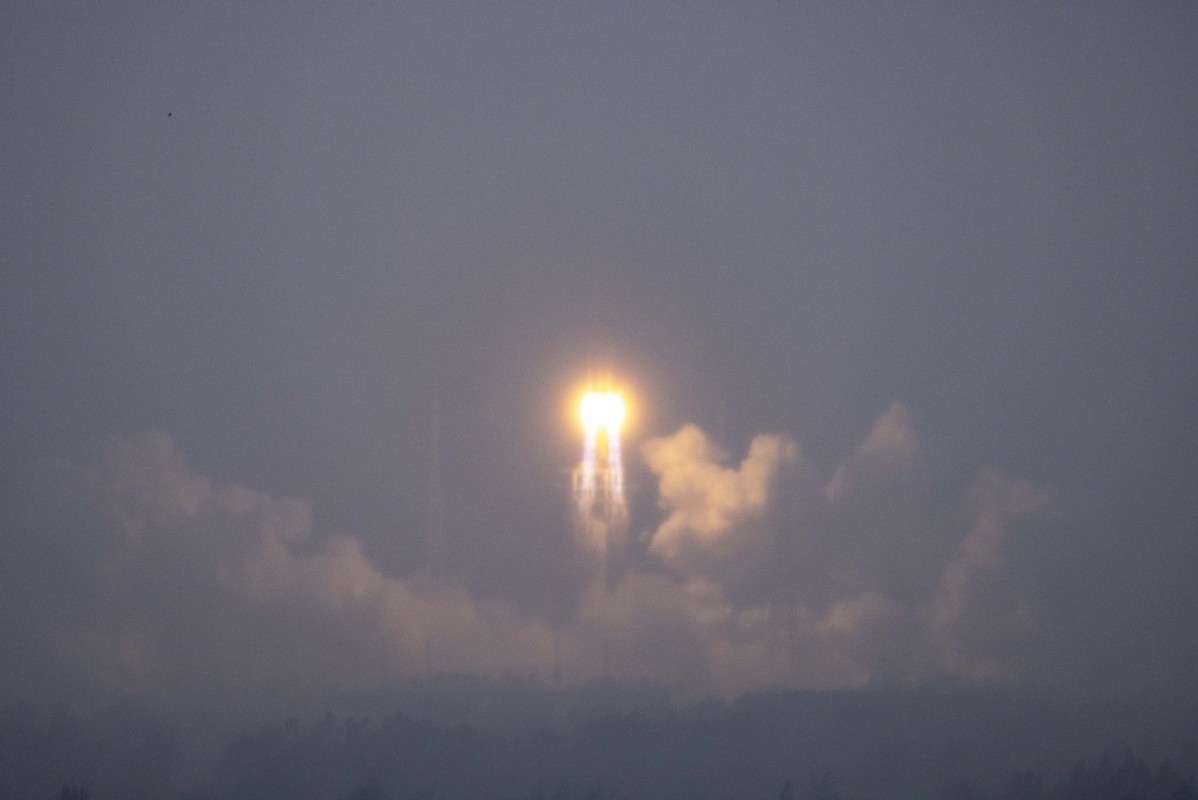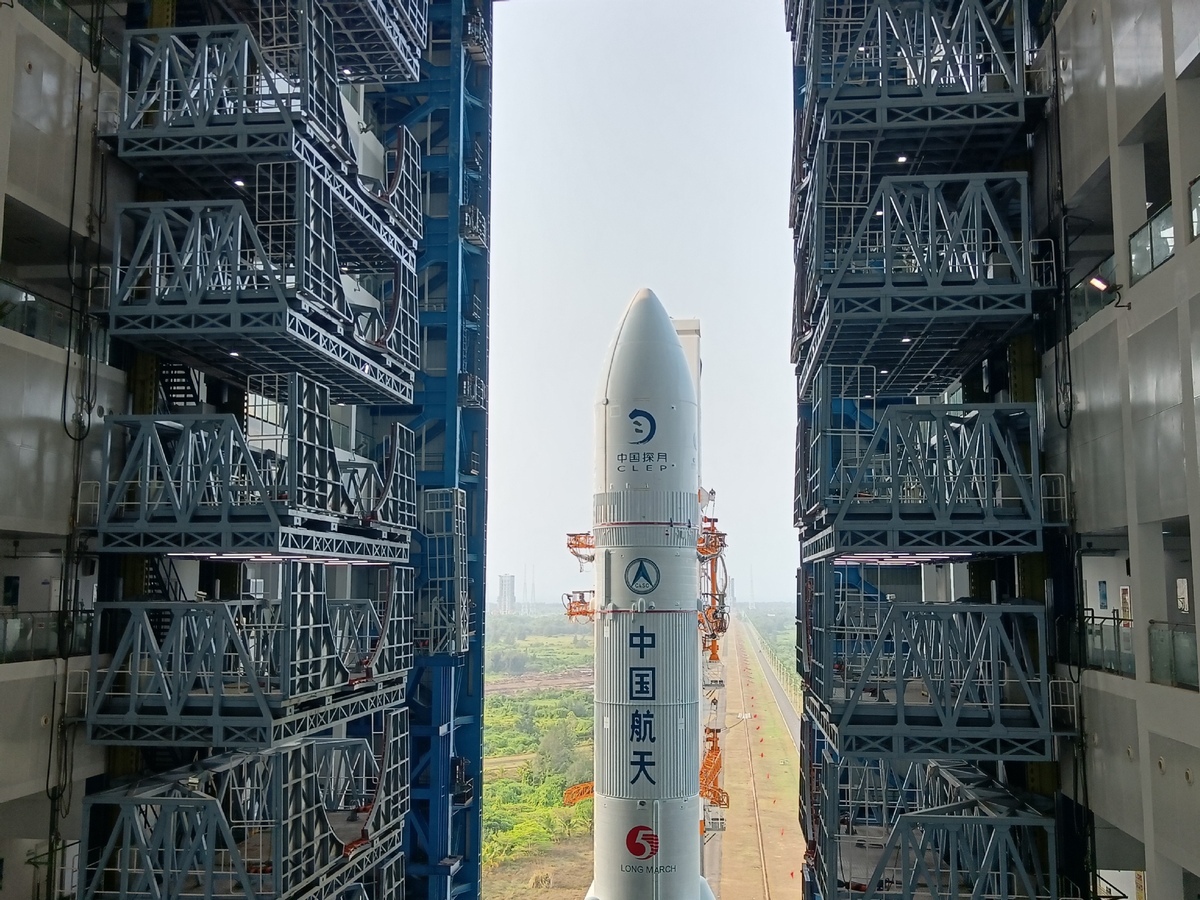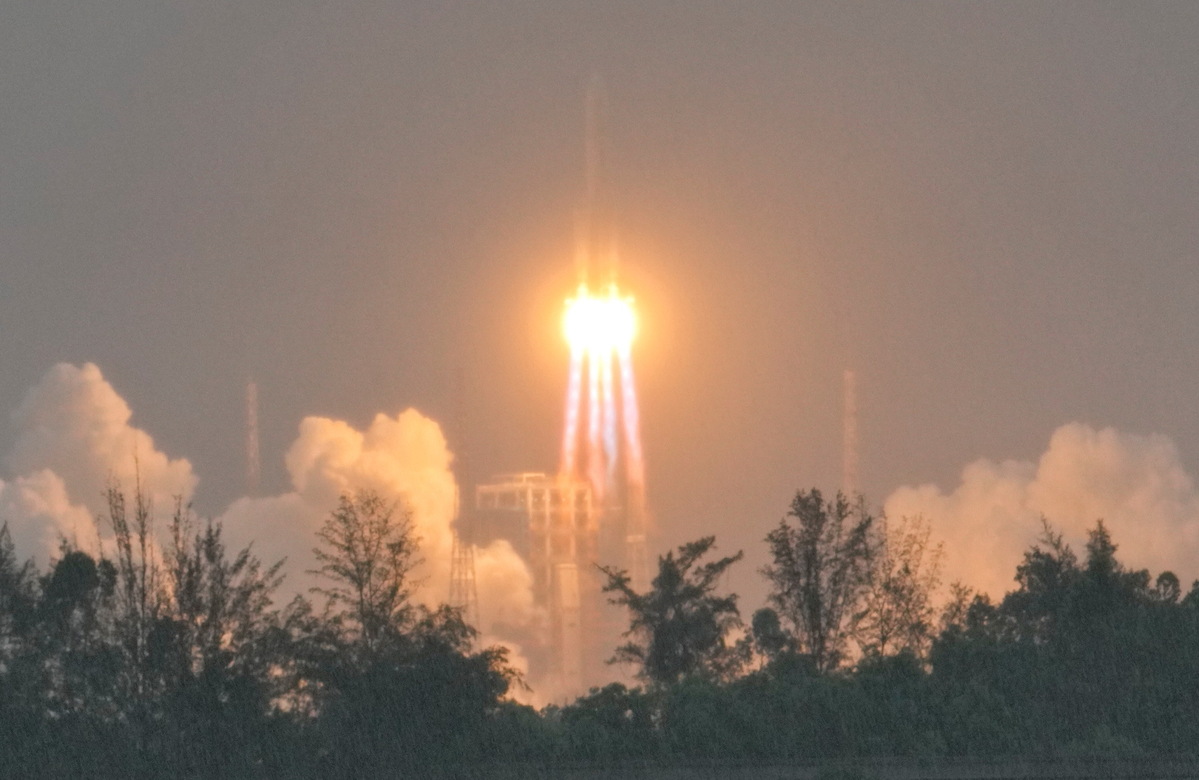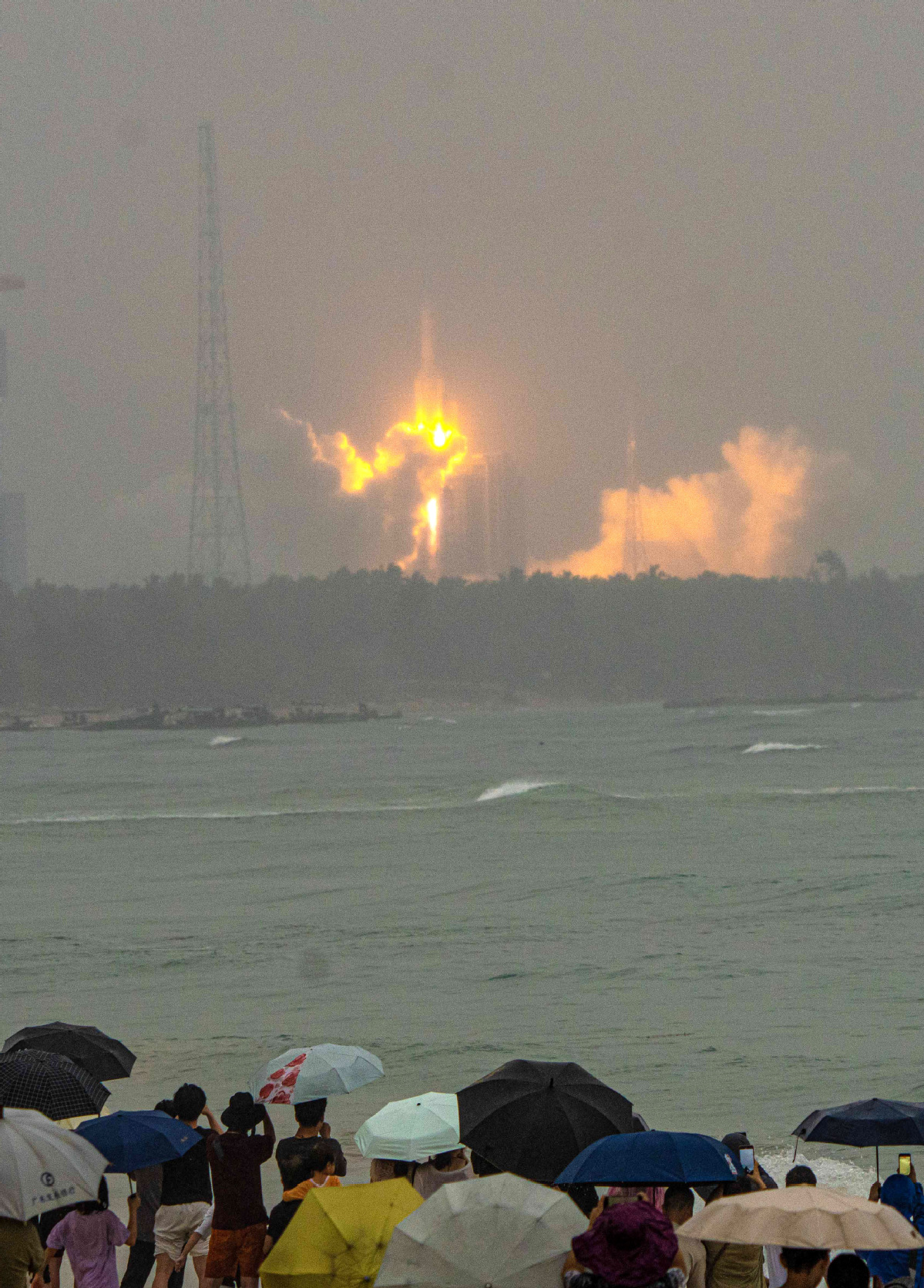 05/03/2024
05/03/2024

A Long March 5 rocket, carrying the Chang'e 6 spacecraft, blasts off from its launchpad at the Wenchang Space Launch Site in South China's Hainan province, May 3, 2024. [Photo/Xinhua]
The Chang'e 6, the world's first attempt to retrieve substances from the moon's far side, embarked on its historic journey on Friday afternoon from China's southernmost province of Hainan.
Carrying the 8.35-metric-ton Chang'e 6, a Long March 5 heavy-lift carrier rocket, the biggest and mightiest space vehicle in China, lifted its 20-story-tall, 870-ton body and soared skyward with dazzling silver flame at 5:27 pm from its launch pad, leaving hundreds of thousands of spectators at and around the coastal Wenchang Space Launch Center in awe and excitement as the gigantic booster thundered up.
The liftoff marked the beginning of the country's second lunar sample-return expedition, after the success of Chang'e 5 in the winter of 2020.

People wait to watch the launch of the Chang'e 6 lunar probe in South China's Hainan province, May 3, 2024. [Photo/Xinhua]
However, the unfolding mission will be much more difficult, challenging and riveting than the Chang'e 5 that landed on the lunar near side, and will definitely be recorded, no matter if it ends up a great success or unfortunate failure, as a symbol of audacious pioneering in the history of humankind's exploration of the final frontier.
Before it, humankind had fulfilled 10 lunar sample-return missions, but all of the samples were collected from the near side on the moon.
As one of China's, and also the world's, most significant space adventures this year, major steps in the Chang'e 6 mission have hit headlines on media around the globe and have attracted huge attention from the Chinese people.

A Long March 5 rocket, carrying the Chang'e 6 spacecraft, blasts off from its launchpad at the Wenchang Space Launch Site in South China's Hainan province, May 3, 2024. [Photo/Xinhua]
Local tourism authority in Wenchang has estimated that there would be at least 200,000 travelers flocking to Longlou, a township in the city that is home to the launch complex, on Friday to witness the launching moment of the daring lunar expedition.
According to the China National Space Administration, the Long March 5 rocket successfully placed the robotic lunar probe into an Earth-moon transfer trajectory, the gateway for our celestial neighbor.
Within the next several days, Chang'e 6 is programmed to fly along its moon-ward trajectory and make some correction operations before conducting a key braking maneuver to avoid accidentally flying past the moon. After that, the spacecraft will be captured by the moon's gravity and move into a lunar orbit.

This photo taken on April 27, 2024 shows the combination of the Chang'e 6 lunar probe and the Long March 5 Y8 carrier rocket being transferred vertically to the launching area at the Wenchang Space Launch Center in South China's Hainan province. [Photo/Xinhua]
Like its predecessor Chang'e 5, the Chang'e 6 spacecraft was designed and built by the China Academy of Space Technology in Beijing, a subsidiary of China Aerospace Science and Technology Corp, and also consists of four components – an orbiter, a lander, an ascender and a re-entry capsule.
Its operational process will basically mimic that of the Chang'e 5. After the probe reaches lunar orbit, the probe's components will separate into two parts, with the orbiter and re-entry capsule remaining in orbit while the lander and ascender approach the lunar surface.
When everything is ready, the lander/ascender combination will make a soft landing in the South Pole-Aitken Basin – a gigantic crater on the far side and also the largest, oldest and deepest basin recognized on the moon – and then start using a drill and a mechanical arm to gather surface and underground samples.
If everything proceeds smoothly, up to 2 kilograms of stones and soil will be collected and packed in a vacuumed metal container inside the ascender.

A Long March 5 rocket, carrying the Chang'e 6 spacecraft, blasts off from its launchpad at the Wenchang Space Launch Site in South China's Hainan province, May 3, 2024. [Photo by Zhang Mao/For chinadaily.com.cn]

A Long March 5 rocket, carrying the Chang'e 6 spacecraft, blasts off from its launchpad at the Wenchang Space Launch Site in South China's Hainan province, May 3, 2024. [Photo by Yuan Chen/For chinadaily.com.cn]